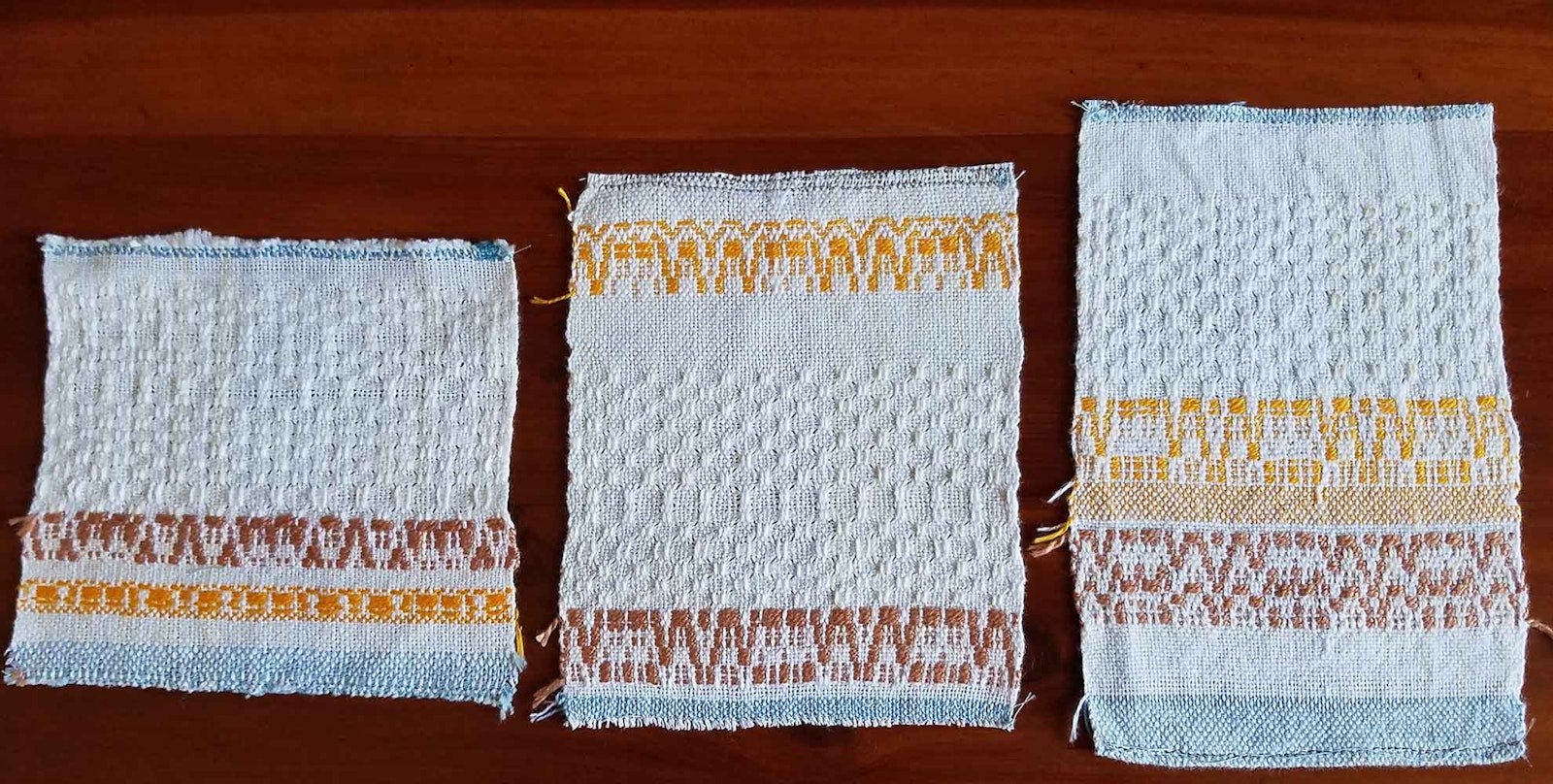This past weekend, two events collided perfectly in my weaving universe: first, the Handweavers’ Guild of America announced that they are having a towel exchange this summer, and second, I was finally ready to start winding a warp for my Sweet Orange Huck towels. The towel draft is a blend that I developed using huck lace and two overshot drafts, Sweet and Lovely and Orange Peel. To weave all three patterns on the same warp requires 15 shafts. My warp and tabby weft are natural and white 10/2 unmercerized cotton.
After weaving 3 samples, I am sure that 24 epi is the correct sett for these towels. At 24 epi, the huck lace areas have the hand I want for a towel. A tightish sett could cause the overshot areas to be rigid, and maybe they would be if I used 5/2 cotton as my pattern weft, but I plan to use 10/2 pearl cotton for my pattern weft, and in the sample, it feels great.
The Number of Ends is Just the Beginning
Using Sarah H. Jackson’s article “Ratios, Rationale, and Rate of Shrinkage” from Handwoven March/April 2014 as my guide, my next step was to determine what width and length I needed to weave. To participate in the towel exchange, you must weave 5 towels that each measure at least 18" x 25", wet-finished and hemmmed.
After wet-finishing my sample, 120 ends sett at 24 epi shrank in width from 5" in the reed to 4". That gave me a ratio of 5/4 to use for my shrinkage calculation.
To weave a towel at least 18" wide, I multiplied 5/4 x 18" to get 22.5", which would require 540 ends.
There are 40 ends in each repeat, and 540 / 40 = 13.5 repeats.
To ensure that I get the minimum width of 18", I rounded up to 14 repeats, or 560 ends (40 x 14).
Weaving software showed me that adding one more end to the last repeat makes the edges look similar, so 561 it is. The towels will be about 24" in the reed.
The Long and Winding Warp
Next, I calculated how long I would need to weave the towels so that they will all measure 25" long after wet-finishing and hemming.
The towels will be finished with ½" hems on both ends, which requires an additional 2", so each towel must be at least 27" long after wet-finishing but before hemming.
In my samples, shrinkage in the length was similar to the shrinkage in the width so I used the same 5/4 ratio. By multiplying 5/4 x 27", I calculated that I need to weave about 34" to get a wet-finished and hemmed towel of 25".
It may sound crazy, but I’ve decided I want to weave 15 towels—5 for the exchange, 1 for myself, and the other 9 for friends and family. I’m not much for production weaving, but this draft will allow me a lot of freedom to mix and match. For instance, I could weave overshot borders with huck centers as Diane Pigg did in her Hoosier Huck towels that were in Handwoven May/June 2020, or I could weave huck borders with overshot centers.
I multiplied 34" x 15 to get about 14 yards, added 1 yard for loom waste, and determined I needed a warp of about 15 yards, which works well with my AVL warping wheel.
So in total, I’ll need to wind a warp of 561 ends 15 yards long. I’ve wound half my warp, and if all goes well, I’ll be threading and sleying next weekend.
Weave well,
Susan

